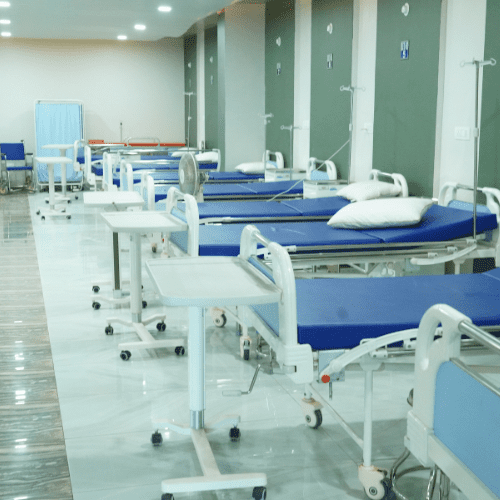Emergency preparedness is a critical aspect of public health and safety, particularly as the frequency and severity of natural disasters increase. Hospitals and healthcare facilities play a pivotal role in managing the aftermath of emergencies, requiring robust systems for effective disaster response. This article explores the importance of assessing hospital capacity and enhancing disaster response systems, two interrelated components essential for safeguarding public health during crises.
Assessing Hospital Capacity for Effective Disaster Response
Understanding hospital capacity is fundamental to ensuring that healthcare systems can meet the demands of any disaster. Capacity assessments involve evaluating various factors, including the number of available beds, medical supplies, and the readiness of the medical personnel. These assessments should be conducted regularly to identify gaps and optimize resource allocation. Without a clear understanding of how many patients a hospital can effectively manage, the system may become overwhelmed during a critical event, leading to dire consequences for patient care.
Moreover, hospitals must not only consider their immediate capacity but also their surge capacity—how well they can expand operations during an emergency. This may involve utilizing additional spaces within the hospital, such as waiting rooms or conference areas, to accommodate more patients. Additionally, partnerships with local and regional healthcare facilities can help distribute the patient load more effectively during a disaster, ensuring that care is available for all who need it.
Effective communication of hospital capacity is also essential. Local governments, emergency response teams, and the public must be aware of the resources available and how they can be accessed during a crisis. This transparency helps manage expectations and allows for more efficient coordination among various sectors involved in disaster response. Hospitals that effectively communicate their capabilities can streamline the flow of patients and resources, ultimately saving lives.
Enhancing Disaster Response Systems for Health Emergencies
Disaster response systems are the backbone of any emergency preparedness plan. A well-coordinated system involves not only hospitals but also local health departments, emergency medical services, and community organizations. Developing a comprehensive response framework requires collaboration among these entities to establish clear roles and responsibilities during a crisis. Regular training exercises and simulations can help identify weaknesses in the response plan and improve coordination among all involved parties.
Incorporating technology into disaster response systems can significantly enhance their effectiveness. For example, real-time data sharing platforms can facilitate better decision-making and resource allocation during emergencies. Tracking systems for medical supplies, patient transport, and personnel deployment allow hospitals and emergency services to respond more quickly and efficiently. Furthermore, predictive analytics can help forecast potential surges in patient numbers based on environmental factors, enabling healthcare providers to prepare in advance.
Community engagement is another crucial element in enhancing disaster response systems. Educating the public about emergency procedures, including what to do in a health crisis and how to access medical services, empowers individuals to take proactive steps. Training community volunteers as first responders can also expand the capacity of the healthcare system, ensuring that immediate care is available even before official responders arrive. By fostering a culture of preparedness at the community level, the overall resilience of the healthcare system can be significantly improved.
In conclusion, effective emergency preparedness hinges on a thorough assessment of hospital capacity and the enhancement of disaster response systems. As the world faces increasingly complex health emergencies, the ability to adapt and respond efficiently is paramount. By focusing on these critical areas, healthcare providers can ensure that they are better equipped to meet the challenges posed by disasters, ultimately leading to improved outcomes for patients and communities alike. Through continuous evaluation, collaboration, and community engagement, we can build more resilient healthcare systems that are prepared for whatever challenges lie ahead.




